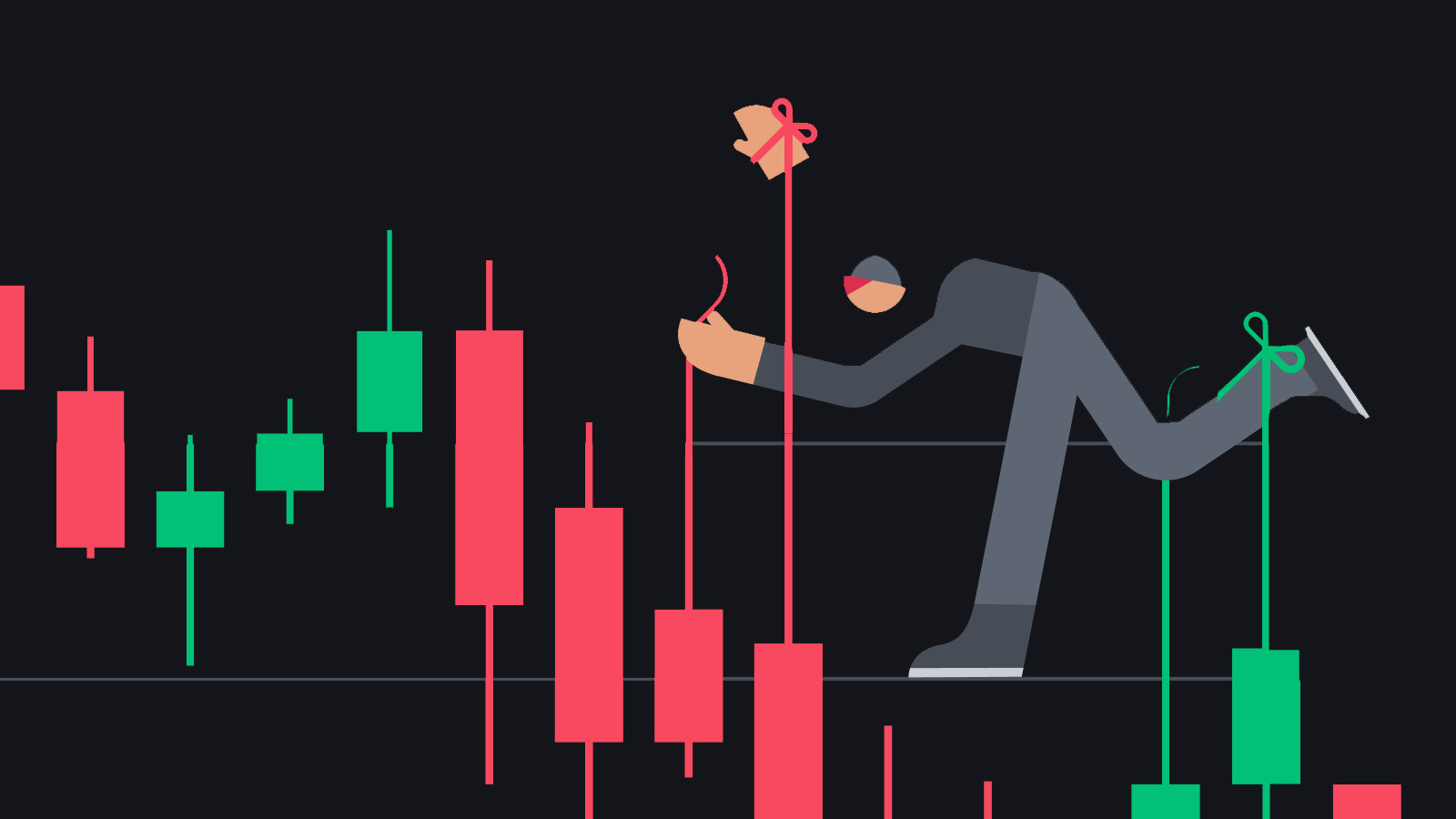Forex Market Manipulation: Recognizing and Avoiding It

In today’s complex financial landscape, the Forex market stands out as one of the most liquid and accessible markets for traders worldwide. With a daily turnover exceeding $6 trillion, the Forex market offers ample opportunities for profit. However, this vast market also attracts its fair share of unscrupulous actors seeking to manipulate it for their gain. In this article, we will explore the various forms of Forex market manipulation, how to recognize them, and, most importantly, how to avoid falling victim to these practices.
Understanding Forex Market Manipulation
What is Forex Market Manipulation?
The Forex market, short for the foreign exchange market, is the largest financial market globally, where currencies are traded 24 hours a day. With such immense trading volume, it’s no surprise that some individuals and entities attempt to manipulate it for their benefit. Forex market manipulation refers to deceptive actions taken to influence currency prices artificially. It can take various forms, including spreading false information, placing fake orders, or exploiting vulnerabilities in the market structure.
Market manipulation can have dire consequences, as it undermines the fundamental principle of fair and transparent trading. It erodes trust in the market, leading to losses for unsuspecting traders and investors. Understanding what constitutes manipulation is crucial for anyone participating in Forex trading.
The Motivation Behind Manipulation
To comprehend why manipulation occurs, it’s essential to consider the motivations that drive these unscrupulous practices. The primary motivation is financial gain. Manipulators seek to profit from their actions by creating artificial price movements. They often employ sophisticated tactics to achieve this, which may involve coordination among several parties.
In addition to financial gain, there are other motives behind manipulation. Some actors may aim to destabilize a particular currency for political or economic reasons. By doing so, they can exert pressure on a country’s economy or government. Geopolitical considerations can play a significant role in Forex market manipulation, making it a complex issue with far-reaching implications.
Understanding the motivations behind manipulation helps traders and investors stay vigilant and take measures to protect themselves from falling victim to these unethical practices.
Common Forms of Market Manipulation
Spoofing and Layering
Spoofing and layering are tactics used by manipulators to create a false impression of market demand or supply. Spoofing involves placing large orders with the intention of canceling them before execution. This deceptive practice can mislead other traders into thinking there is genuine interest in buying or selling a currency at a certain price.
Layering takes spoofing to the next level by involving multiple orders at different price levels. These orders may not be intended for execution but are designed to create confusion among market participants. Both spoofing and layering aim to manipulate the perception of supply and demand, leading to artificial price movements.
Recognizing these tactics in action is essential for traders to protect themselves from falling into the traps set by manipulators.
Front-Running
Front-running is a manipulative practice often associated with unethical brokers or financial institutions. It occurs when a broker executes orders on behalf of its clients while taking advantage of advance knowledge of pending orders from those clients. In essence, the broker prioritizes its interests over those of its clients, leading to unfair advantages and potential losses for customers.
Front-running can severely impact the trust between traders and their brokers. Traders should carefully choose their brokers, looking for transparency and ethical practices, to avoid falling victim to front-running schemes.
These expanded sections provide a more in-depth understanding of Forex market manipulation and its various forms. In the next section, we will delve into specific examples and methods to recognize manipulation in real-time trading scenarios.
Pump and Dump
Pump and dump schemes involve artificially inflating the price of a security through false or misleading statements, only to sell off the security at a profit once the price has risen. This leaves unsuspecting investors with losses.
Stop Hunting
Stop hunting is the intentional triggering of stop-loss orders by manipulating the market to drive prices briefly in the opposite direction. This forces traders out of their positions at a loss before the price returns to its original direction.
Recognizing Manipulation
Unusual Price Movements
Recognizing unusual price movements in the Forex market is crucial to identifying potential manipulation. Here are some signs to watch out for:
| Signs of Unusual Price Movements | Description |
| Rapid and Extreme Fluctuations | Sudden and significant price swings without a clear fundamental reason. |
| Inconsistent Patterns | Deviations from typical chart patterns or irregularities in price movements. |
| Lack of News or Events | Significant price changes occurring in the absence of relevant news or economic events. |
| Flash Crashes | Sharp, sudden drops in currency prices followed by quick recoveries. |
Abnormal Volume Spikes
Unusually high trading volumes can signal potential manipulation. Here are indicators to consider:
- Volume vs. News: Compare trading volume with relevant news releases. If volume spikes don’t align with significant announcements, it raises suspicions.
- Spike Duration: How long does the abnormal volume persist? Sudden surges in trading followed by an immediate drop could be a red flag.
- Volume Concentration: Look at trading volumes for specific currency pairs. A disproportionate focus on a single pair could indicate manipulation efforts.
Sudden News Releases
Manipulators often use false or misleading news to influence prices. To distinguish legitimate news from manipulation:
| Ways to Verify Sudden News Releases | Description |
| Source Verification | Confirming the credibility of the news source through reputable financial outlets. |
| Corroboration | Cross-referencing the news with multiple reliable sources for authenticity. |
| Timing | Being cautious when news releases align conveniently with significant market movements. |
These tables provide a structured overview of the signs and indicators traders can use to recognize manipulation in the Forex market, helping them make informed decisions and avoid potential pitfalls. In the next section, we will explore strategies for protecting oneself from manipulation and ensuring a secure trading experience.
Strategies to Avoid Manipulation
Research Your Broker
Selecting a trustworthy broker is crucial for avoiding manipulation. Here’s a checklist to assess a broker’s reliability:
- Regulatory Compliance: Ensure your broker is regulated by a reputable authority, such as the Financial Conduct Authority (FCA) or the Commodity Futures Trading Commission (CFTC).
- Customer Reviews: Read reviews and testimonials from other traders to gauge their experiences with the broker.
- Transparency: Look for brokers who provide clear and comprehensive information about their services, fees, and execution practices.
Diversify Your Portfolio
Diversification is a key strategy for reducing the impact of manipulation. Consider these diversification guidelines:
- Currency Pairs: Spread your investments across various currency pairs to minimize exposure to manipulation in a single market.
- Asset Classes: Explore other asset classes like commodities, stocks, or cryptocurrencies alongside Forex to diversify your investment portfolio.
Set Clear Stop-Loss Orders
Implementing effective risk management is essential. Here’s how to use stop-loss orders to protect your investments:
- Define Risk Tolerance: Determine how much risk you’re willing to take on each trade and set stop-loss orders accordingly.
- Adjust Regularly: Review and adjust your stop-loss levels as market conditions change to protect your gains and limit losses.
These lists offer practical guidance to traders on recognizing manipulation, selecting reliable brokers, and managing their risks effectively in the Forex market. In the next section, we will explore additional strategies to safeguard your investments and navigate the Forex market with confidence.
Set Clear Stop-Loss Orders
Implement stop-loss orders to limit potential losses in case of unexpected price movements. Adjust them as market conditions change.
Stay Informed
Regularly update yourself on market news and events. Awareness can help you recognize and react to manipulation attempts.
Protecting Yourself from Manipulation
▪ Use Technical Analysis
- Utilize technical analysis tools to identify patterns and trends. These can provide insights into market movements and potential manipulation.
▪ Avoid Overleveraging
- Excessive leverage can amplify losses when manipulation occurs. Trade with caution and use appropriate risk management strategies.
▪ Maintain Discipline
- Stick to your trading plan and strategy, even in the face of unexpected market moves. Emotional reactions can lead to poor decisions.
Reporting Suspicious Activities
If you suspect market manipulation, report it to the relevant authorities or regulatory bodies. Transparency and accountability are essential for maintaining market integrity.
The Forex market offers significant opportunities for traders, but it also carries the risk of manipulation. By understanding the various forms of manipulation, recognizing the signs, and implementing prudent trading strategies, you can protect yourself and make informed decisions in this dynamic market.
FAQs
- How common is Forex market manipulation?
- Market manipulation occurs, but its frequency varies. Vigilance is key to avoiding it.
- Can a beginner trader recognize manipulation?
- Yes, with proper education and awareness, even beginners can identify suspicious market activity.
- Are all brokers trustworthy?
- No, not all brokers are trustworthy. Research and choose a reputable broker.
- What is the role of regulatory bodies in preventing manipulation?
- Regulatory bodies aim to enforce rules and ensure market fairness by monitoring and penalizing manipulative practices.
- How can I report suspicious market activities?
- You can report suspicious activities to relevant authorities or regulatory agencies for investigation.


